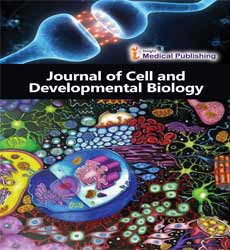Cell Therapy& Its Mechanism of Action
Jane Ru Choi*
University of British Columbia, Vancouver, Canada
- *Corresponding Author:
- Jane Ru Choi
University of British Columbia, Vancouver, Canada
E-mail: janeru@ch.gmail.co
Received Date: November 05, 2021; Accepted Date: November 22, 2021; Published Date:November 29, 2021
Citation: Choi JR (2021) Cell Therapy and Its Mechanism of Action. J Cell Dev Biol. Vol.5 No.6:16.
Commentary
Cell therapy (CT) is the transplantation of human cells to replace or repair damaged tissue and/or cells. With new technologies, innovative products, and infinite imagination, many different types of cells may be used as a part of a therapy or treatment for a variety of illnesses and conditions. Some of the cells that may be used include hematopoietic (blood-forming) stem cells (HSC), skeletal muscle stem cells, mesenchymal stem cells, lymphocytes, dendritic cells, and pancreatic islet cells.
The Food and Drug Administration's Center for Biologics Evaluation and Research (CBER) regulates human cells, tissues, and cellular and tissue-based products (HCT/P) intended for implantation, transplantation, infusion or transfer right into a human recipient, including hematopoietic stem cells. The FDA has published comprehensive requirements (current good tissue practice, donor screening and donor testing requirements), to save you the introduction, transmission and spread of communicable disease. Regulatory requirements for allogeneic products are larger than for autologous products. Stem cells come from different reassets and are used in a whole lot of procedures or applications. Stem cells from bone marrow, umbilical cord blood or peripheral blood are routinely utilized in transplantation procedures to treat patients with cancer and other disorders of the blood and immune system. Stem cells sourced from cord blood for unrelated allogeneic use also are regulated by the FDA, and a license is required for distribution of these products. The FDA requires a review process in which manufacturers must show how products will be manufactured in order that the FDA can make certain that appropriate steps are taken to assure purity and potency.
Cell therapy is targeted at many medical indications in multiple organs and by numerous modes of cellular delivery. Accordingly, the unique mechanisms of action worried in the treatments are wide-ranging. However, there are main standards by which cells facilitate healing motion;
Stem, progenitor, or mature cellular engraftment, differentiation, and long-time alternative of broken tissue. In this paradigm multipotent or unipotent cells differentiate into a specific cellular kind in the lab or after reaching the site of injury (through nearby or systemic administration). These cells then combine into the site of injury, replacing broken tissue, and thus facilitate advanced characteristic of the organ or tissue. An instance of that is using cells to update Cardiomyocyte after myocardial infarction, to facilitate angiogenesis in ischemic limb disorder.
Cells which have the ability to launch soluble elements along with cytokines, chemokines, and increase elements which act in a paracrine or endocrine manner. These elements facilitate self-restoration of the organ or location through inducing nearby (stem) cells or attracting cells emigrate in the direction of the transplantation web page. Early cellular passages had been proven to be greater green paracrine hobby than later passages. The brought cells (through nearby or systemic administration) stay possible for an extraordinarily quick period (days-weeks) after which die. This consists of cells that obviously secrete the applicable healing elements, or which go through epigenetic adjustments or genetic engineering that reasons the cells to launch huge portions of a particular molecule. Examples of this consist of cells that secrete elements which facilitate angiogenesis, anti-inflammation, and anti-apoptosis. This mode of motion is proposed through corporations along with Pluristem and Pervasis that use adherent stromal cells or mature endothelial cells to deal with peripheral artery disorder and arterio venous get right of entry to complications.
Open Access Journals
- Aquaculture & Veterinary Science
- Chemistry & Chemical Sciences
- Clinical Sciences
- Engineering
- General Science
- Genetics & Molecular Biology
- Health Care & Nursing
- Immunology & Microbiology
- Materials Science
- Mathematics & Physics
- Medical Sciences
- Neurology & Psychiatry
- Oncology & Cancer Science
- Pharmaceutical Sciences
